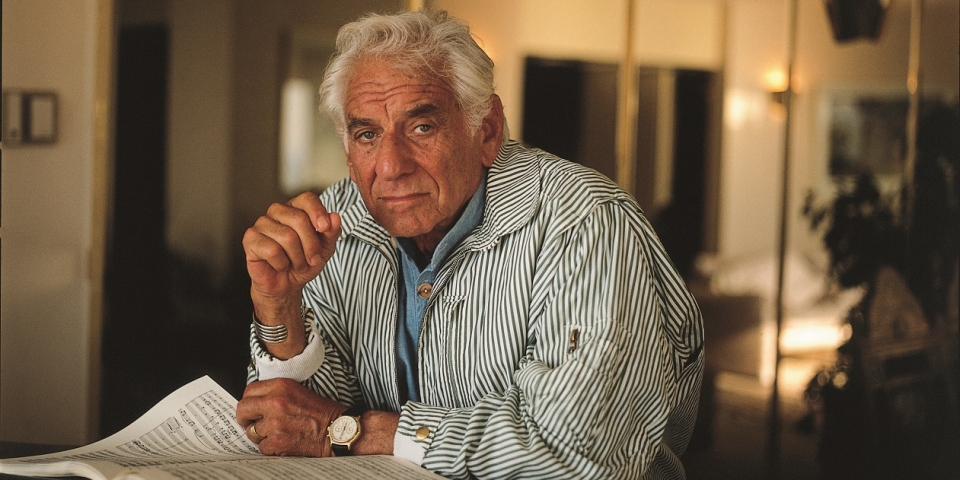Bernstein’s Tristan und Isolde: A Study in Late Romantic Interpretation
Abstract
This article examines Leonard Bernstein’s 1981 live recording of Richard Wagner’s Tristan und Isolde, exploring how Bernstein’s interpretation reflects both the revolutionary nature of Wagner’s work and late 20th-century performance practices. Through analysis of orchestral and vocal performances, this study situates Bernstein’s recording within the broader context of Tristan und Isolde’s performance history and its significance in Western classical music.

1. Introduction
Richard Wagner’s Tristan und Isolde, composed between 1857 and 1859, is widely recognized as a turning point in Western music history. Its innovative use of harmony and form challenged traditional conventions and influenced subsequent generations of composers. This study focuses on Leonard Bernstein’s 1981 live recording, examining how a 20th-century conductor approached this seminal 19th-century work.
Research questions include:
- How does Bernstein’s interpretation reflect the revolutionary aspects of Wagner’s score?
- How does this recording compare to historical performance practices of Tristan und Isolde?
- What insights does this recording offer into late 20th-century approaches to Romantic opera?
2. Historical Context
Wagner’s Tristan und Isolde is noted for its expansion of traditional tonal harmony, particularly through its use of unresolved dissonances and chromatic progressions. The “Tristan chord” at the opera’s opening has been the subject of extensive musicological analysis (Bailey, 1985). The opera’s influence extended beyond music, impacting literary and artistic movements of the late 19th and early 20th centuries (Dahlhaus, 1979).
3. Methodology
This study employs critical listening and comparative analysis, examining Bernstein’s recording in relation to the score and other notable recordings. Particular attention is paid to tempo, dynamics, and interpretive choices in key sections such as the Prelude and Liebestod.
4. Analysis
4.1 Orchestral Performance
Bernstein’s interpretation is characterized by a slow, deliberate approach, particularly evident in the fourteen-minute Prelude. This tempo choice emphasizes the harmonic tensions in Wagner’s score, allowing the unresolved dissonances to resonate fully. The orchestral performance demonstrates exceptional clarity and richness, highlighting Wagner’s innovative orchestration techniques.
4.2 Vocal Performances
Peter Hofmann’s Tristan and Hildegard Behrens’ Isolde both demonstrate strong dramatic commitment. Hofmann’s steady, masculine tone contrasts effectively with Behrens’ more emotionally volatile performance. Behrens’ rendition of the Liebestod is particularly noteworthy for its emotional intensity and technical prowess in the high register.
4.3 Interpretive Choices
Bernstein’s approach to dynamics and phrasing throughout the opera emphasizes the work’s emotional content. His interpretation seems to prioritize the expressive potential of Wagner’s score over strict adherence to traditional performance practices.
5. Discussion
Bernstein’s recording reflects a late 20th-century approach to Wagner, emphasizing emotional expressivity and clarity of orchestral texture. This interpretation aligns with Bernstein’s broader approach to Romantic repertoire, characterized by slower tempi and heightened emotional intensity (Laird, 2018).
The recording’s success in conveying the opera’s emotional content while maintaining orchestral clarity demonstrates how modern recording techniques can serve Wagner’s complex orchestrations. However, Bernstein’s slower tempi may be seen as diverging from historical performance practices, reflecting changing tastes in opera interpretation.
6. Conclusion
Leonard Bernstein’s 1981 recording of Tristan und Isolde offers valuable insights into late 20th-century approaches to Wagner interpretation. By emphasizing clarity, emotional expressivity, and the revolutionary aspects of Wagner’s harmony, Bernstein’s recording both honors the work’s historical significance and reinterprets it for a modern audience. Future research could explore how this recording has influenced subsequent performances and recordings of Tristan und Isolde.
References
Bailey, R. (1985). An Analytical Study of the Sketches and Drafts. In Bailey, R. (Ed.), Wagner: Prelude and Transfiguration from Tristan and Isolde. Norton.
Dahlhaus, C. (1979). Richard Wagner’s Music Dramas. Cambridge University Press.
Laird, P. R. (2018). Leonard Bernstein. Reaktion Books.
“Leonard Bernstein: The Complete Symphonies & Concertos.” Deutsche Grammophon. https://www.deutschegrammophon.com/en/cat/4797538
